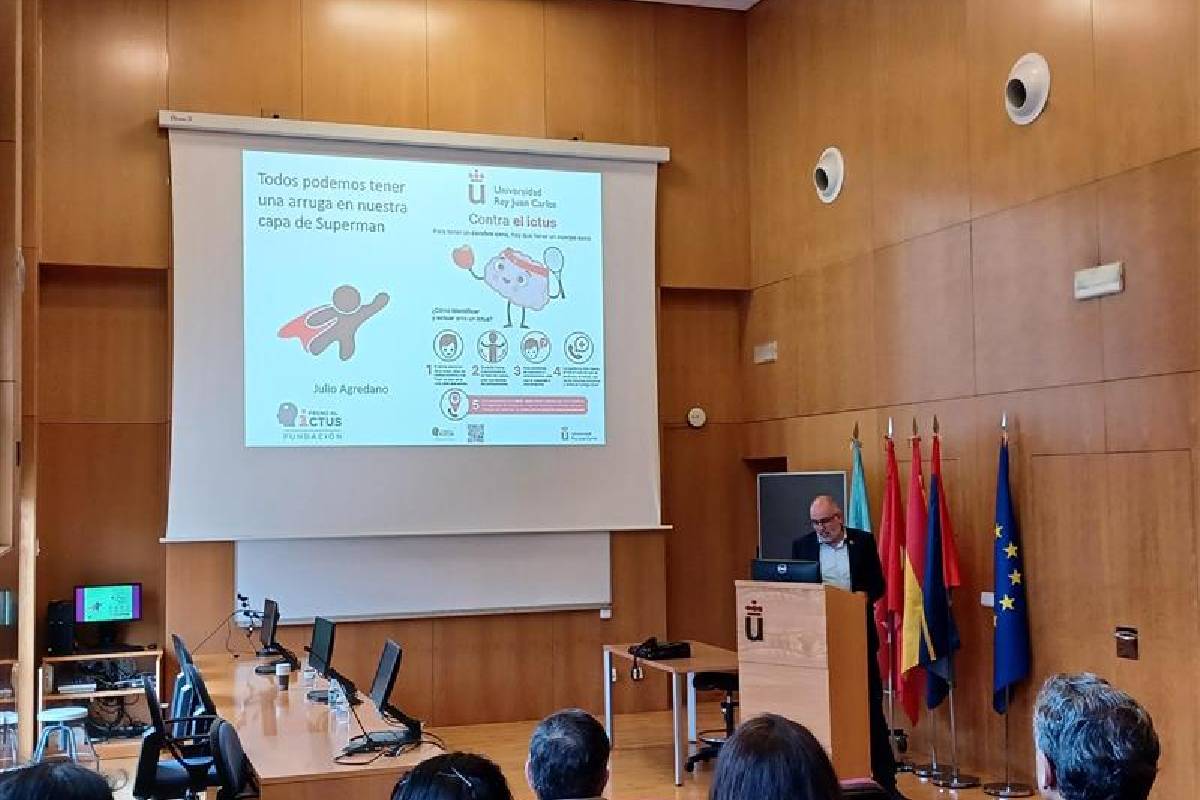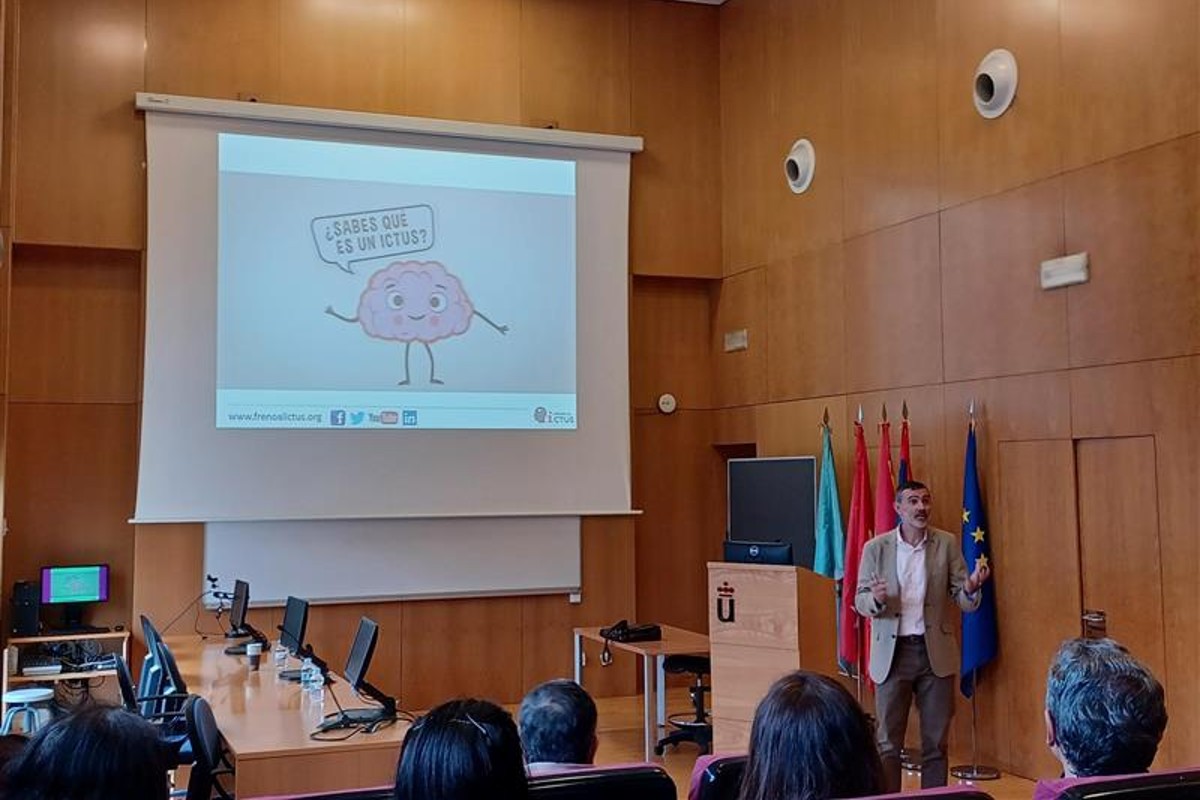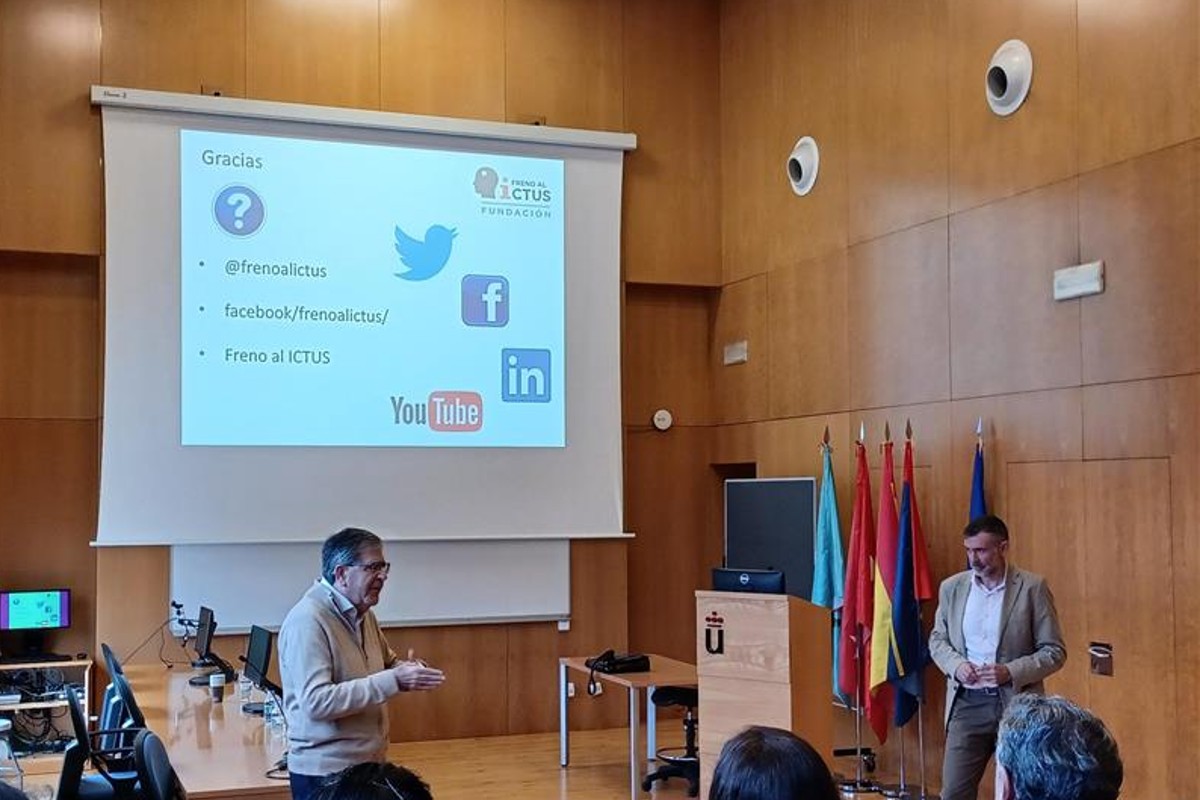Ramon Machuca
The Healthy University Office together with the Occupational Risk Prevention Service and the Medical Service organizes, on the occasion of the launch of the 'URJC against stroke' campaign, a day to raise awareness among the university community about this type of stroke, its prevention and rapid action protocol to intervene.
The event opened with the speech of the vice-rector of Quality and Strategy, Andrés Martínez, who thanked the university staff for their attendance and expressed the intention of the URJC to collaborate on future projects with the Freno al ictus foundation, "from now on we will begin activities to identify suspected cases of Stroke, only the ability to detect stroke justifies the effort we started today.”

The president of the foundation, Julio Agredano, was the protagonist of the symposium, since his presentation presided over the majority of the event. He also explained how Stroke Brake works and in the same vein as the vice-rector, he was excited about other collaborations with the University, “the campaign with the URJC is a challenge for the future,” he said.
Agredano used various resources to raise awareness about the effects of stroke. First of all, she provided data such as the fact that this disease is the first cause of death among women or the first cause of adult disability. She also explained the very high economic and personal costs that she entails, "I had a stroke when I was 39 years old, and I faced rehabilitation for 4 hours a day at a cost of 45 euros per hour."

The president of Freno al Ictus did not hesitate to reveal the guidelines to follow in order to prevent this health problem. The guidelines consist of a healthy and varied diet, physical activity, healthy habits, regular medical check-ups and keeping your mind active.
The second part of the conference consisted of learning to recognize a possible case of stroke, and how to act in response to it. There are 3 symptoms in total and they are related to the drooping of one side of the face. To do this, we must tell the affected person to smile; loss of strength on one side of the body or inconsistent answers to simple questions. Although other symptoms such as sudden headache, loss of balance, prolonged tingling or vision problems are also common.
Once the problem is detected, the 'stroke code' must be activated through which the protocol will be activated and the patient will be transferred by ambulance to a suitable hospital, since not all of them are. One of the fundamental indications in these cases is that they do not exceed 4 hours from the appearance of the symptoms, “those symptoms happened to me and I went to bed to rest,” laments Agredano.
At the end of the talk, a spontaneous debate took place between the professor of Physical Medicine and Rehabilitation at the URJC, Juan Carlos Miangolarra, and the speaker, in which some topics of the day were discussed and attendees were able to participate.




